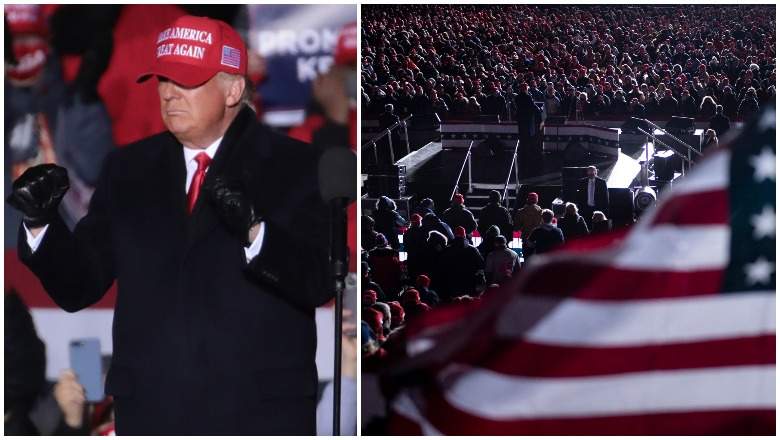The THERE’S A JOKEY line, on which male fashion designers rely, presents a collection of buttons and blazers coloured with Ho-Hama : What do you want me to do, get a three-sleeve shirt? It’s a hammie, considerate, but I get it. Due to anatomical and taste limitations, designers can only reject male braces in a number of ways.
Or as I thought. That month I came across a garment that pushed the idea of mutated shirts out of a hypothetical realm.
Barberry,
The brand, best known for its Casablanca Bogart formation, has created a checkered flannel shirt, apparently designed for the three-headed creature.
The purpose of patchwork and collage is to use what is already there.
It has three collars: a central collar, through which the real human head passes, then two mannequin collars on the buttons, which are stuck like linings on each shoulder, just for show. Surprisingly, this Cerberus-friendly mix is only the most extreme expression of this trend: Other labels, from the sublime (the Marni fashion house in Milan) to the egalitarian (Uniqlo), collect their own Frankish shirts.
Uniqlo shirts, which combine four panels with contrasting but equally dark patterns, are more reasonable. This neat collage is reminiscent of Brooks Brothers’ witty shirts, the first examples of updated tops, which have been made from rags around the label shirt factory since the 1970s.
It seems the flaps of this fabric are moving today’s patchwork shirts, said Damien Paul, head of menswear at London-based retailer Matchesfashion: The aim of patchwork and fabric collage is to use what is already there. The examples of game sales are rather noisy. To create a unique and feverish button barrette, the London brand Ahluwalia crossed fragments of old striped shirts in a fragmentary style. Rebuild, a line of Japanese branded needles, sews together vertical stripes of different vintage flannels in a hard-wearing chaos.
Travar Jordan, 23 years old, a shopkeeper from Seattle, searched the internet for weeks for a Franconian shirt needle whose special mix of fabrics appealed to him. (Like many garments recovered from salvaged materials, these shirts are unique). For Mr. Jordan, who has spent his entire life in the Pacific Northwest surrounded by lumberjacks in checkered shirts, the sewn style of the Needles is a fresh look that remains a classic. Somehow I grew up with these [shirts] in my wardrobe, he says.

T-shirts, more attractive than scientific experiments From left to right: Needle shirt, $230, matchesfashion.com; Ahluwalia shirt, $550, ln-cc.com; Shirt, $600, Marni, 646-532-6015
Despite the trick of the triple Burberry, most of the reconstructed shirts are not meant for strangers. Stylishly, it would be wise to leave Marnie’s delicate buttons (connecting the two designs in the middle) on simple trousers and shoes. But on your body it will feel like any other shirt and will probably not fall off your crotch.
Timothy Grindle, owner of the Canoe Club store in Boulder, Colorado, remarked that his customers are much more open to the idea of buying a well thought-out Frankenstein shirt than, for example, eye-catching trousers with remarkably wide legs. (He sold this shirt only a few weeks ago to a man in his sixties). Although his own style is skewed, Mr. Crushes crushes four needle flannel and mixes them into outfits as sober as a small grain of madness.
Sustainable customers see virtue in the shirts of Ahluwalia, Needles and other companies (including Bode and Pentimento) that reuse existing textiles. Davis Colleen Reed, 23, a marketing management student at Savannah College of Art and Design, recently collected one of the Eagles’ recycled shirts and found it more environmentally friendly than the giant’s latest flannel.
H&M.
But as this trend developed outside the niche, eco-smart manufacturers such as Needles came to the fore. The above mentioned Uniqlo patchwork shirt is not made of existing materials. And also remixed tops of Marnie, Berberry or L.L. Bean.
Of course, it is hard to imagine that a mass marketer like Uniqlo would have assembled and assembled enough cast iron garments to create the volume he needs on his scale. And these luxury Shichi labels seem more focused on removing something unusual than re-filtering waste. A brand new patchwork blanket is not bad in itself, but when eco-conservatives manage your purchases, you ensure that the raw materials for your collage creation are preserved.
Write to Jacob Gallagher at [email protected].
The Wall Street Journal is not reimbursed by retailers listed in its articles as points of sale for merchandise. Often the shops on the list are not the only ones.
Copyright ©2020 Dow Jones & Company, Inc. All rights reserved. 87990cbe856818d5eddac44c7b1cdeb8
Related Tags:


